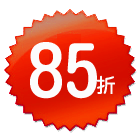Preface
The Infinity (Endless Ultimate) gives rise to the Supreme Ultimate, the Supreme Ultimate gives rise to the Duality (Yin and Yang), the Duality generates four emblematic symbols and the four emblematic symbols engender eight basics Ba-Gua. The Infinity, which is boundless and eternal, signifies Yin and Yang in the primal order less chaos, without beginning and end. The Supreme Ultimate refers to endless space. The harmony of Human beings and the nature depends upon the seamless coordination of Yin and Yang. Four emblematic symbols are the spring equinox, the summer solstice, the autumn equinox and the winter solstice. Farmers in ancient times planned the farm work according to the four seasons. They sowed in spring, planted in summer, reaped in autumn and stored in winter. The Sage Fu-Xi applied Yin and Yang symbols (duality) to create primordial Ba-Gua. Xia-Yu later reinterpreted it to become the "Manifested Ba-Gua". King Wen of Zhou state overlapped the Ba-Gua (Eight Trigrams) and developed it into the current 64 Gua (64 Trigrams). I-Ching is one of the oldest Chinese classic texts. It was created collectively by the Sages in ancient China. "Variability"," Persistency" and "Simplicity" are the philosophy of I-Ching. Variability signifies that all creatures in the cosmos are constantly changing, which result in new phenomena. Persistency means although all creatures are changing constantly, there is still a universal truth, or so-called "law of being", governing everything. Simplicity means that after all creatures experienced changes, new situations occurred, but the creatures became adapted and everything co-existed peacefully once again. At the end, they live prosperously and successfully. Learning I-Ching will enable you to foresee the ins and outs of things. If a thing is handled according to the doctrine of the mean, it then complies with the "Persistency". Life is full of ups and downs. The uncertainty and changeability of life is "Variability". I-Ching teaches you to turn bad luck into good fortunes and help things go smoothly. This is called "Simplicity". From ancient times to the present day, all matter on earth and the life cycles of all living beings never fall outside of the scope of "Variability", "Persistency" and "Simplicity". Learning I-Ching will educate and inform you about the past and the present, which is exactly what the proverb "To know is difficult, to do is easy!" preaches. This book is attempting to interpret the 64 hexagrams and 384 yaos (lines on a trigram), providing 448 suggestions in total, allowing 64 hexagrams and 384 yaos be idiomized and easily understandable. I-Ching is also a book of divination, used as a tool to predict the future to relieve peoples doubts.
The second part of the book– Modern Feng Shui provides readers with related knowledge of Feng Shui to improve the design and layout of a house to help the family live in harmony and prosperity. I was once invited to the US to do a Feng Shui consultation for a new bank. The consultation ranged from the choice of address, office layouts to grand opening. Many people in the West do not believe in Feng Shui. They tend to see it as a superstition. However, I always take the chance to explain to them. For example, the blood vessels in human bodies are influenced by the magnetic fields because there is iron in the vessels. Also, many people experience a sudden change of character as they are influenced by the axial tilt of the earth. In addition, there is a line between the center of northeast and southwest of a house. In feng shui, the line is called "the ghost gate line ". If a cat, a dog, or a mouse kept in a cage is placed on the ghost gate line, it will become agitated and try to move away immediately. To provide valid Feng Shui consultation for a house, I have to carefully study the layout, outside environment and zodiac signs of the families. I think some occupations, architects, Feng Sui masters, real estate agents, funeral service workers and fortunetellers in particular, need to know Feng Shui to provide better services to customers. When I was young, life was full of frustrations. Since I studied Feng Shui, my career has prospered rapidly and smoothly. It is perhaps due to the blessing from the God, but could it also be due to the results of studying Fend Sui?
This book is mainly written in English. I hope everyone in the world can learn and appreciate the wisdom of the sages in ancient China and have blessings, lucks, happiness, fortunes and longevity from I-Ching and Feng Shui.
Your kind advice is highly appreciated! Happy reading!
Roger Wu in Taipei

